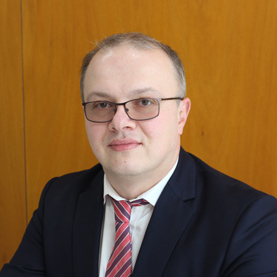“Currently, almost all shoulder conditions can be treated using shoulder arthroscopy, it has truly revolutionised treatment, reducing the recovery period enormously.”
The shoulder is a complex joint which provides us with extensive movement of the arm, enabling normal day-to-day function as well as the ability to work and enjoy taking part in sport, the arts and much more. As a result, any abnormality has significant repercussions on our daily livesa.
It is a procedure performed using a small camera, called an arthroscope, to examine and repair tissue in or around the shoulder joint. The arthroscope is inserted through a small skin incision.
The great majority of injuries affecting the shoulder joint can be treated using arthroscopy. The advantage of arthroscopy over classic open surgery is the much shorter recovery period, it being a much less aggressive procedure. Surgery is performed under general anaesthetic and lasts between 30 minutes and two hours, depending on the condition being treated.
Shoulder conditions most commonly treated using arthroscopy are:
- Shoulder Impingement Syndrome, an injury caused by excessive use of the shoulder resulting in pain at the front or side of the shoulder. The pain is felt most when raising the arm or lifting it out to the side. Also knows as rotator cuff tendonitis or shoulder bursitis, it is very common in swimmers and athletes who play baseball, tennis and volleyball. It can also present in weightlifters, gymnasts, divers and rowers.
- Acromioclavicular osteoarthritis, wear and tear of the joint in the top of the shoulder, where the clavicle meets the acromion, is a frequent cause of shoulder pain.
- Rotator cuff tears, the rotator cuff is a group of muscles and tendons which together form a cuff over the shoulder joint. These muscles and tendons support the arm in its socket and allow movement of the shoulder joint. The tendons can be torn due to injury or overload.
- Shoulder instability, occurs when the muscles, tendons, bones and ligaments surrounding the shoulder do not function correctly and do not manage to maintain the head of the humerus within the glenoid fossa. When this happens, the shoulder is described as unstable and the joint may be partially displaced, known as shoulder subluxation, or completely displaced, known as shoulder dislocation. It is a very common, but very frustrating, sporting injury.
- Acromioclavicular dislocation, is a traumatic injury caused by a tear of the stabilising joint structures: the acromioclavicular and coracoclavicular ligaments and the joint capsule. The acromial end of the clavicle rises to a level above the acromion causing an obvious deformity and the injured arm drops. This injury is typically caused by falls on the shoulder in sports such as cycling or motor sports (bikes). It is also commonly seen on the football pitch.
The risks and complications involved in shoulder arthroscopy can be classified into three sections:
- Anaesthetic: patients are assessed by specialists who decide on the best anaesthetic technique, it is no different from other surgical procedures and the surgery is not a lengthy one.
- Preoperative: the surgeon must have the appropriate knowledge and ability to prevent and solve complications during surgery.
- Postoperative: postoperative complications are the same as with any joint surgery. They include infection (uncommon in arthroscopic surgery), joint rigidity and residual pain. An appropriately prescribed exercise regime is very important in relation to this last point, the regime starts immediately at the time of discharge from hospital.
Recovery following shoulder arthroscopy depends on the injury treated and on the patient’s activity level. For this reason, individual protocols are always developed.
The recovery period varies between one to two weeks for surgeries not involving rotator cuff injuries, and up to two or three months if the rotator cuff has been repaired. It may take 4 to 6 months in the case of athletes practising sports involving throwing, or who take part in contact sports.
Once the surgical wound has healed, all patients can perform activities such as eating normally and attending to personal hygiene from 7 to 10 days afterwards, despite wearing a shoulder immobiliser.
Our orthopaedic shoulder specialist does not use external sutures, the scars are therefore almost invisible.
 All these conditions can be treated arthrosocopically in our hospital by Dr. Marius Negru, orthopaedic and trauma surgeon and HC Marbella’s shoulder and elbow specialist.
All these conditions can be treated arthrosocopically in our hospital by Dr. Marius Negru, orthopaedic and trauma surgeon and HC Marbella’s shoulder and elbow specialist.
If you live outside Spain and are considering shoulder surgery, at HC Marbella we take care of every last detail, from organising your journey and accommodation until your return home. We offer a complete package in a restful environment so you can feel safe, calm and relaxed.
Sources: MedlinePlus.com/ Spanish Society of Shoulder and Elbow Surgery (Sociedad Española de Cirugía Hombro y Codo – SECHC)
July 30, 2019
Read other news
Tel.: +34 952 908 628
+34 609 148 799
952908898 Oncology
951829978 Diagnosis by imaging
951829947 Gynecology
952908897 Fertility
951829947 Physiotherapy